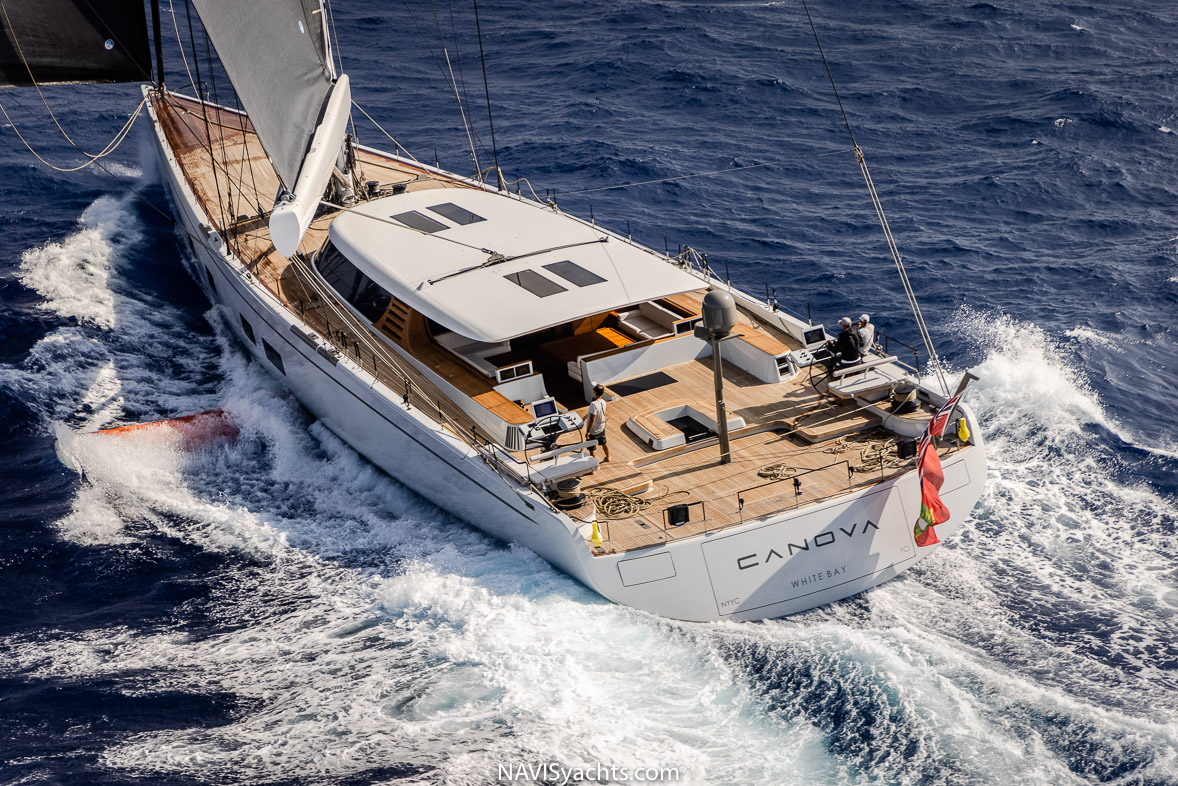SuperYacht design has long been at the forefront of innovation, with each new yacht launched outdoing previous versions that just a few months earlier had seemed to break all boundaries. The design changes were often in the realm of rig configuration, interior design, or a myriad of other creative ideas. Now along comes Canova, a new sloop from Baltic Yachts. Canova is a stunning yacht by all measures but what sets her apart is the addition of a DSS system. Let me explain. DSS, or Dynamic Stability System, is the brainchild of British naval architects Hugh Welbourn and Gordon Kay of Infiniti Yachts. It’s a system that has been around for more than a decade and has been added to smaller boats with great success. It’s essentially a board that extenders laterally out the side of the boat. The board, being a foil, provides lift when it’s in the water. The lift reduces displacement. It also reduces heeling. This makes for a much more comfortable ride. “I am very pleased to see that heel angle has already been reduced by 8 degrees in trials, and there is plenty more fine-tuning to come when we understand more about how to trim the yacht in conjunction with the foil,” said Canova’s owner. “The reduction in pitching motion is amazing. Expected performance increases in terms of speed will be a bonus,” he added.

I am sure that many more Superyachts will follow Canova’s lead. The DSS system offers so much more than added comfort and additional speed. In addition to reducing heeling, it also reduces pitching, both of which are factors that lead to crew fatigue on long offshore passages. On Canova, the 9-meter long foil is set in a cassette built into the bottom of the yacht. It emerges just below the waterline, around amidships. One of the biggest engineering challenges met by Baltic Yachts was building the mechanism into the hull beneath her luxury accommodation. The foil runs directly beneath the owner’s cabin, where its installation was made more challenging because the bunk itself can be adjusted to counteract the heel angle. The foil is controlled by a pulley system, which is driven by a captive electric winch. It runs on high-load titanium bearings and is deployed to leeward. The loads imposed by the foil can be as much as 140 tonnes, which required not only complex engineering of the hull, but also an appreciation of the effects of greater stability on the rig and sail plan. Greater stability places greater loads on the rig and sail plan.
















































